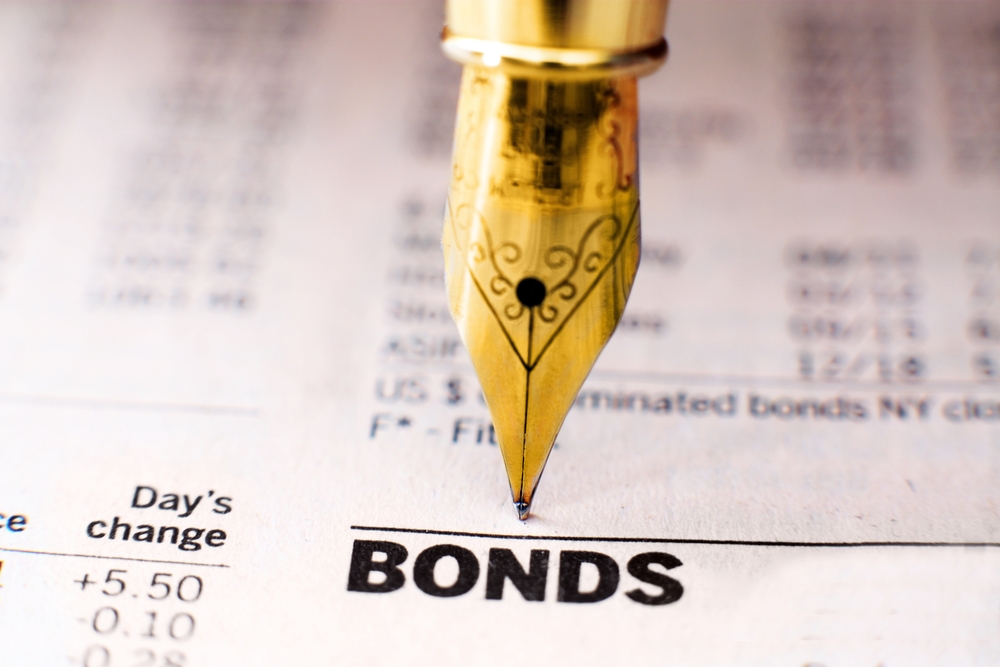Editor’s Note: Most bond returns are negative year to date, so you may want to consider avoiding certain long-term bond investments. However, as Alexander Green mentions in today’s article, convertible bonds have a promising future.
And Chief Income Strategist Marc Lichtenfeld couldn’t agree more.
According to Marc, a convertible bond is an explosive, market-beating investment that performs like a refundable stock.
This hybrid asset gives investors the option to either collect interest as they hold until maturity… or convert the bond into a predetermined number of shares at a predetermined price.
You could see 10X gains in five years… and if not, at least collect significant interest for your troubles and walk away with a profit.
Why keep taking risks in today’s volatile market?
Click here to see how you could target 10X gains.
– Madeline St.Clair, Assistant Managing Editor
With inflation climbing to the highest levels in decades last year, I argued at our Private Wealth Seminar in Colorado Springs that the historic 40-year bull market in bonds is over.
At the reception afterward, an attendee pulled me aside to ask for clarification.
“Bonds are issued with a face value of $1,000,” he said. “They pay interest twice a year – and you get your $1,000 back at maturity. So what the heck is a bull or bear market in bonds?”
The fact that an experienced investor asked this question is telling.
No one would have asked it in 1981, when bond prices had headed straight south for years.
But I’m getting ahead of myself. Let’s start with the basics…
Barring a default, bonds are issued and redeemed at $1,000 each.
But most investors do not buy bonds when they are issued. Nor do they ordinarily hold them to maturity.
Rather most fixed income investors – and their fund managers – buy and sell them in the aftermarket.
Since bonds pay a fixed rate of interest, their values decline when rates go up. (Since newly issued bonds yield more.)
Conversely, the market values of investment-grade bonds increase when rates decline.
If this didn’t happen, there would be no liquidity in bonds.
After all, no informed investor would voluntarily buy a similarly rated debt instrument that yields less than the prevailing rate of interest.
The chart below is instructive.

Interest rates went straight up during the hyperinflationary late ’70s and early ’80s.
Interest rates didn’t peak until June 1981, when Federal Reserve Chairman Paul Volcker took the federal funds rate to 20%.
The prime rate rose to 21.5%. (And the 30-year Treasury bond peaked at 15.2% that October.)
Although there have been fluctuations along the way, interest rates and inflation have generally trended lower for 40 years. That generated the long-running bull market in bonds, where investors could generally sell their bonds at a premium to the purchase price.
However, the tide finally began receding last year.
As a result of massive fiscal stimulus, super-easy monetary policies, the Great Snarl in the global supply chain (due to the pandemic), and sharply rising energy prices (as a result of overregulation, underinvestment and the war in Ukraine), we now have the highest inflation in four decades.
I don’t believe we’re headed into another hyperinflationary period.
However, barring a recession or some other adverse event, we will almost certainly see much higher interest rates in 2022 and 2023.
As you can see from the chart above, interest rates are already trending higher.
The benchmark 10-year Treasury note now yields 2.3%, the highest level since May 2019. It has broken above its downward sloping trend line that stretches all the way back to the peak in 1981.
The iShares Core U.S. Aggregate Bond ETF (NYSE: AGG) is down 5.8% from the beginning of the year. That’s only slightly less than the 6.3% decline in the S&P 500.
The Federal Reserve has promised multiple increases this year and next.
That’s why most bond returns are negative year to date.
And bond returns will stay low – and perhaps negative – for the foreseeable future.
Does this mean you should abandon bonds altogether?
No, it doesn’t. But it does mean you should make some adjustments.
In particular, long-dated bonds lock holders into a particular fixed rate of interest for several years… or a few decades.
They will perform worse in a rising interest rate environment. So shorten your maturities.
You should also avoid zero-coupon bonds – the worst of the worst in a rising rate environment since they compound at a low fixed rate – and leveraged bond funds.
A leveraged bond fund borrows money short term to buy additional longer-dated issues and enhance the fund’s yields.
This is all well and good as long as rates are flat to lower. But when rates spike higher – as they have recently – look out below.
The same thing will happen to these funds as happens to a margined stock portfolio during a market sell-off.
In fact, investors in leveraged closed-end bond funds will get hit with a triple whammy:
- Bond prices will drop as interest rates rise.
- The net asset value of the fund will plunge because the portfolio is leveraged.
- And the market price will likely drop to a deeper discount to the net asset value as well.
So avoid long maturities, zero-coupon bonds and leveraged bond funds.
In addition to short-term bonds – which are the least negatively impacted by rising rates and allow investors to capture higher yields as they become available – you should also own Treasury Inflation-Protected Securities (TIPS), prime rate funds and convertible bonds.
(A convertible bond is convertible into the common stock of the issuer and can potentially appreciate in value even as interest rates rise.)
I’ll have more to say on each of these types of securities in future columns.
In the meantime, a few things are clear.
Inflation is at historic highs. The Federal Reserve is way behind the curve. And the 40-year bull market in bonds? It’s over.

